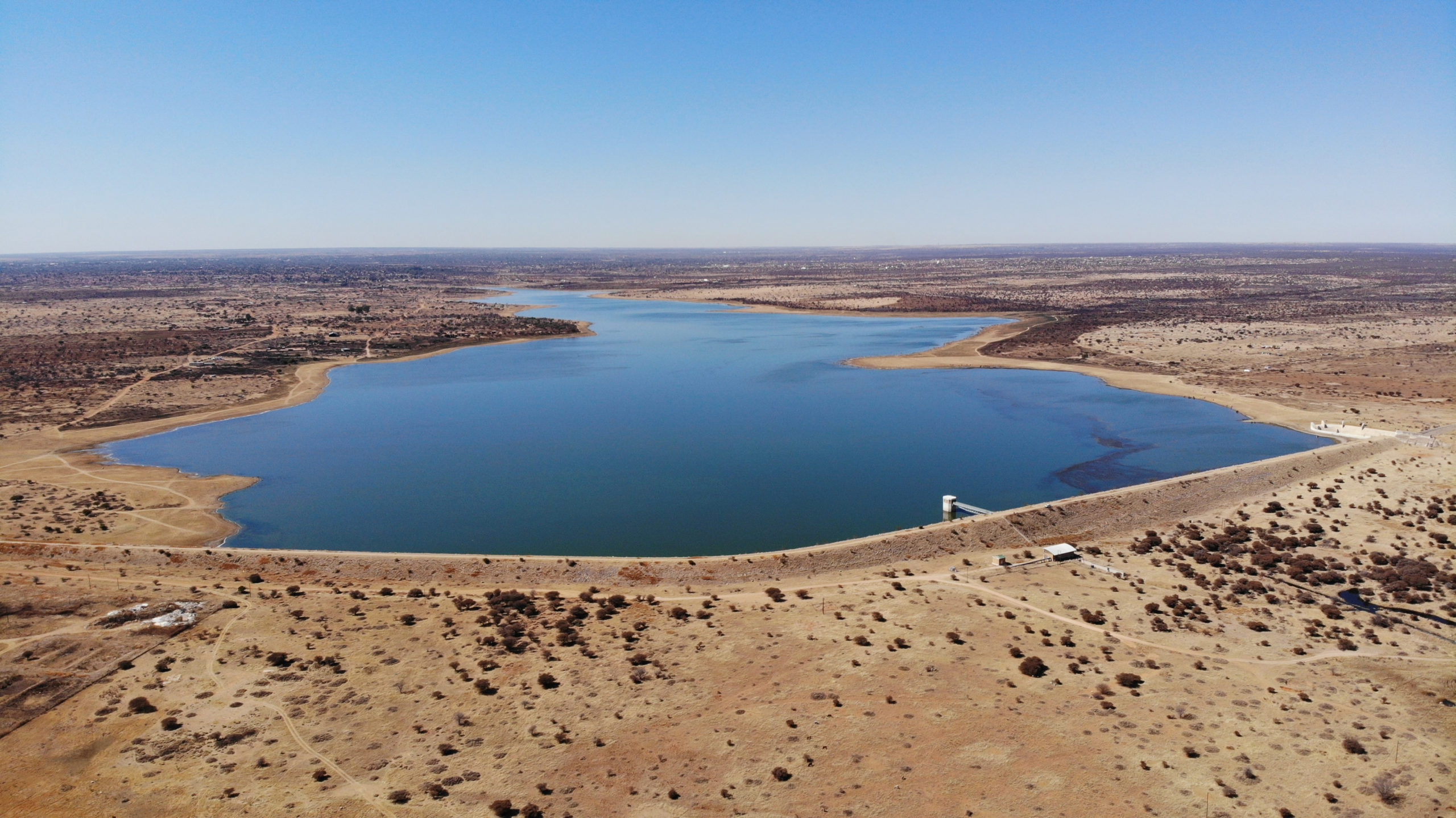
Featured Item

Israeli company brings SA dam back to life
Just before Pesach this year, the SA Jewish Report detailed how leading global “watertech” company, BlueGreen Water Technologies, was assisting local government authorities to transform toxic water into healthy drinking water at Setumo Dam on the Molopo River in North West province.
Six months later, the company has announced that its water clean-up intervention has been successfully completed. For the first time in decades, the people of Mahikeng are receiving safe drinking water from their main water supply source, which was severely contaminated by toxic algae blooms. The project was in collaboration with Sedibeng Water, the company overseen by the Department of Water and Sanitation.
“BlueGreen is committed to making water safe,” says Eyal Harel, the chief executive and co-founder of the company. “We undertook this project pro-bono, knowing it was the only chance for this community to access clean drinking water, enjoy Setumo Dam as a safe water source, and unleash its potential for recreational purposes. We wish to empower local authorities to reclaim their water sources and advance the health and livelihood of their communities.
“To clear Setumo Dam was an unprecedented technical and operational challenge, with far-reaching consequences for the rural community that relies on it,” he told the SA Jewish Report. “The project has not only confirmed BlueGreen’s ability to remediate lakes under the toughest conditions, but also improved water quality and water availability. Setumo Dam can now be used not only as a source of drinking water but also as a local attraction for recreation. The economic development possibilities in and around the lake are far-reaching.”
The outbreak at Setumo Dam was considered one of the worst cases in South Africa. The heavy load of blue-green algae was the result of decades of insufficiently treated sewage being released directly into the dam. The dam’s size and level of contamination had deemed it “untreatable”.
BlueGreen’s treatment protocol was tailored to the unique conditions in Setumo Dam by BlueGreen’s field specialists. It also eliminated unpleasant taste and odour compounds from the drinking water.
“The unique situation we found in the field brought about two previously unaddressed challenges,” says Harel. “The first was the rural location and lack of basic infrastructure. This mandated an out-of-the-box logistical adaptation so that our treatment could be delivered timely and accurately.
“In addition, we encountered extreme biological conditions that rendered the entire dam a dead aquatic zone. Reviving the lake meant tailoring a specific treatment protocol that would reverse infectious processes that have been dominating the dam for decades, and give a fighting chance to non-toxic species that would enhance the lake’s biodiversity. As time went by, changes became evident from treatment, not only in the colour of the water, but a clear change in the number of animals, primarily birds, approaching the water, as well as an increase in their diversity.
“Shortly before starting treatment, we witnessed the local community performing rituals that involved entering Setumo Dam’s toxic water. We saw some fishermen trying to catch the few small fish that survived the harsh conditions. We grasped how under-developed the area was, in spite of its amazing potential. And we realised that once cleaned, we wouldn’t just improve the health and livelihood of the people around Setumo Dam, we would create a historical opportunity for local authorities to turn the lake into a place that could bring about much-needed development and prosperity.”
Asked if the company will work in South Africa again, Harel says, “As part of our work at Setumo Dam, we tried to establish an economic model that will allow us to repeat this in other under-developed areas in South Africa and around the world. We have established that a clean Setumo Dam saves the local community as much as 90% of their ongoing drinking water production cost! We hope that these findings will push other communities into action to reclaim and revive their water sources.
“Years of drought, pollution, growing population, and global warming have all contributed to South Africa’s deteriorating water availability and water quality,” he says. “Water has turned into a matter of national security. BlueGreen has made it part of its business to support local, rural communities, and establish their basic human right to clean water. Our means to remediate Setumo Dam’s water couldn’t have been put into play if not for the tremendous help of local government, including South Africa’s Department of Water and Sanitation and Department of Environment, Forestry and Fisheries, local water boards (Sedibeng Water and Rand Water), as well as the active support of our local partners, AECI group and Capitol Air. This united effort and commitment by so many is heartwarming, and an encouraging indication of South Africa’s innate ability to overcome great challenges.”
Jurgens van Loggerenberg, the director of Africa for BlueGreen Water Technologies says, “The project has had a positive impacted on more than half a million lives as a direct result of improved water quality. Setumo Dam’s high cyanobacterial cell content [billions of cells per millilitre] far surpassed the levels deemed safe and approved by the World Health Organization and the South African Bureau of Standards.
“The heavy organic load was also disrupting the ability of the local water treatment plant to operate, increasing the overall costs substantially and keeping the final water quality well below national and international standards. This historical achievement is the result of a joint effort that included the Department of Water and Sanitation, Sedibeng Water, and Rand Water Analytical Services working together.”




